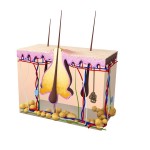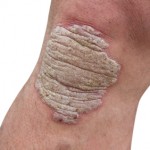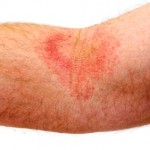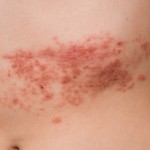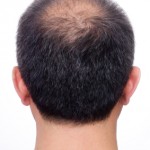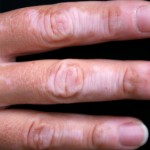Skin problems can be treated by Acupuncture and Chinese herbal medicine.
It is estimated that 1 in 5 of all outpatient visits to doctors in the United States are made for complaints dermatological in nature. Even though there are many people seeking treatment for skin disorders, Western medicine has been unable to find treatments that are both safe and efficacious long-term. Chinese medicine treats skin conditions safely and obtains significant, lasting results.
Click on any of the following skin condition names to read more about how they are treated using acupuncture and Chinese herbal medicine:
[threecol_one]Acne
[/threecol_one]
[threecol_one]Herpes Simplex and Zoster/Shingles
[/threecol_one]
[threecol_one_last]Lichen Simplex Chronicus
Pityriasis Versicolor[/threecol_one_last]
Acupuncture treats Acne
Acne, also known as acne vulgaris, is a skin disorder that occurs on the face, chest, shoulders and back. Acne may also appear on the upper arms. Acne consists of comedones (clogged pores; whiteheads or blackheads), pimples, and larger and deeper lumps (acne cysts or nodules). The potential for scarring is high. It was once thought that only pre-teens and adolescents got acne, but new data shows some people are struggling with acne into their 50s.
In 2004, the total direct cost associated with the treatment of acne exceeded $2.2 billion, including substantial costs for prescription and over-the-counter products.[1] Spending on anti-acne treatments is high for two reasons: 1, because an estimated 45 million people in the United States have acne, and 2, because it is difficult to achieve lasting results with Western medical treatments, like benzoyl peroxide and salicylic acid.
Chinese medicine, on the other hand treats acne successfully through acupuncture, herbal medicine, and dietary and lifestyle modifications. Results (reduction of pimples and acne lesions) are usually seen within three months. Acne scar reduction treatments may take longer before seeing results. Large scars may not resolve entirely, but we try to reduce their size. By combining these different treatment modalities, Chinese medicine treats acne for less money and with longer lasting resolution than other methods of acne treatment. To read more about the classifications of acne in Chinese medicine, click over to the Acne Page.
Acupuncture treats Psoriasis
Psoriasis is an auto-immune disorder of the skin. Psoriasis is also known as a scaling disorder. Faulty signaling by the body’s immune system causes rapid turn-over of skin cells, which in turn causes the skin to appear silvery-white and form psoriasis plaques. There are five types of psoriasis: plaque, guttate, inverse, pustular and erythrodermic. Plaques most commonly occur around the elbows and knees, but can affect any area of the body, including arm pits, back, buttocks and scalp. Unlike eczema, psoriasis is more likely to occur on the outer-side of the joint. Psoriasis plaques can occur in different size patches, from small areas to patches covering the entire body. The nails and joints may be affected, as in psoriatic nail distrophy and psoriatic arthritis, respectively. Psoriatic arthritis occurs in approximately 3-10% of people with psoriasis.[2]
Psoriasis is one of the most common skin diseases in the United States, affecting as many as 2% of the population. It is also one of the most stubbornly resistant to treatment. Western medical treatments typically will involve immune-suppression medications and/or steroids. This puts patients at risk for a whole host of other diseases and side effects, some of which are very dangerous. On the other hand, Chinese herbal medicine has been shown to be safe over its more than 2000 years of use, and constant monitoring and modern-day research in China. Studies have shown up to 65% of psoriasis cases have significant resolution of symptoms with proper herbal medicine and acupuncture treatments. Dietary modifications will also play an important role in creating substantial changes. In addition to the most common variant, plaque psoriasis, other forms of psoriasis such as guttate, pustular and erythrodermic psoriasis will benefit from treatment.
To read more about the Chinese medicine classifications of psoriasis, please visit the Psoriasis Page.
Acupuncture treats Dermatitis and Eczema
Dermatitis, or eczema, is a dermatological disorder of the superficial layers of the skin. Eczema is a subtype of dermatitis, but the two terms are often used interchangeably. Symptoms include dryness and rashes with at least one of the following: swelling/edema, redness, itching, crusting, flaking, blisters, oozing or bleeding. Areas where the rash has healed may discolor for a time. Other types of dermatitis are contact dermatitis, atopic dermatitis (typically referred to as eczema), Lichen Simplex Chronicus (or neurodermatitis), seborrheic dermatitis, and pompholyx eczema.
Hard data on eczema prevalence is not available, but research has shown a substantial increase in cases in the latter half of the 20th Century.[3] Research in the United Kingdom has shown that 1 in 9 have been diagnosed with eczema at some point during their lifetime.[4] Western medical treatments often include immunomodulators or immunosupressants with the use of anti-itch drugs. These therapies have serious potential side effects and complications. Topical steroids may also be used, but have risks associated with them.
Recent research has shown significant reductions in both itch and lesions following treatment with Chinese herbal medicine and acupuncture. Research presented at the the 2009 Annual Meeting of the American Academy of Allergy, Asthma & Immunology (AAAAI) in New York analyzed 14 patients with persistent atopic dermatitis who received Chinese herbal medicine and acupuncture. The study found a drastic reduction in symptoms within 2.5 to 3.5 months depending on the patient. The course of treatment differs for each individual, but results are often seen within a few months, even in cases of severe eczema. For more information, please visit the Eczema Page.
Acupuncture treats Herpes (Simplex and Zoster)
Herpes Simplex and Zoster are both viral infections. Herpes simplex is caused by one of the HSV viruses. Herpes simplex is classified by location, most commonly on the mouth/lips or on the genitals. Viral cycles alternate between active and latent periods, the latent period having no symptoms. It is important to speak to your primary care provider about how and when herpes virus can be spread to other people. There is no cure for herpes, but anti-viral therapy can cause herpes to go into remission, during which time the virus retreats into sensory nerve cells to hide. In addition to anti-viral therapy for herpes, there are a number of complimentary and alternative medical treatments. Part of Chinese medicine treatment of herpes is to strengthen the body so that it can been the virus in a latent period.
Herpes zoster is caused by the varicella zoster virus, which is also the cause of chicken pox. Herpes zoster is also known as shingles. If you have not ever had chicken pox, you cannot have shingles. If someone does have shingles it is often many years, even decades, after an initial chicken pox infection in childhood. Shingles presents as a painful skin rash with fluid-filled blisters (vesicles) along a single strip extending from the spine to the front of the body (this strip is known as a dermatome). Shingles is more common in the elderly and those who are immuno-compromised. Following an outbreak, chronic, sometimes severe pain is common along the strip of infection. This is known as post-herpetic neuralgia. You can read more about treating this chronic pain on the Post-herpetic Neuralgia page.
To read more about both type of herpes, please visit the Herpes Page.
Acupuncture treats Rosacea
Rosacea, according to rosacea.org, is estimated to affect 16 million Americans, but 78% of Americans don’t even know what this condition is. As an aging baby boomer population reaches the ages at which people are most susceptible to develop rosacea, increased awareness of this condition will become more important.
Rosacea most commonly affects women ages 30 to 50. Rosacea symptoms include facial redness, blushing and flushing of the face, spider-like blood vessels (telangiectasia) on the face, acne-like sores on the skin that may weep and then crust over, burning and stinging on the affected skin of the face, and red and watery eyes. Rosacea typically worsens over time, so it’s better not to delay treatment.
In a way similar to acne, rosacea can have significant effects on personal appearance. Researchers have shown that these negative effects can lower self-esteem and self-confidence. Just because you have rosacea, doesn’t mean you have to suffer. Visit the Rosacea Page to learn more about acupuncture treatment for rosacea and to book an appointment with me.
Acupuncture treats Alopecia (hair loss)
Alopecia, specifically pattern alopecia or pattern baldness, is the loss of hair from the head. Alopecia areata may affect any part of the body on which hair generally grows. The exact cause of alopecia is unknown, but researchers cite genetic, environmental and hormonal causes as possibilities.
Acupuncture treats alopecia by nourishing the body and clearing imbalances that might be blocking nourishment and the flow of blood and fluids to the head and scalp. By incorporating Chinese herbal medicine into acupuncture treatments, alopecia can also be treated from the inside out.
In my practice, I very rarely use acupuncture with stimulation to treat patients, but alopecia is one of the times I make an exception. Using micro-current stimulation on the scalp encourages blood flow and the regrowth of lost hair. This technique is not painful, and in fact is quite beneficial.
To read more about treating alopecia and how to make an appointment, please visit the Alopecia Page.
Acupuncture treats Lichen Simplex Chronicus
Lichen simplex chronicus, also known as neurodermatitis or LSC, is characterized by a cycle of itching and scratching which leads to thickening of the skin. The thickened skin is often leathery and brown. Lichen simplex chronicus is self-perpetuating since the thickened skin also produces an itch sensation, leading to more scratching and thickening. The key to treating lichen simplex chronicus is to break the itch-scratch cycle, soothe inflammation and restore normal nourishment to the skin.
Lichen simplex chronicus is sometimes associated with atopic dermatitis (eczema) or psoriasis. LSC often has a large mental-emotional component to it, typically seen in conjunction with nervousness, anxiety, and depression.
Acupuncture and herbal medicine treatments can break the itch-scratch cycle and restore normal sensation to the skin. For more information about lichen simplex chronicus, please visit the Lichen Simplex Chronicus page.
Acupuncture treats Vitiligo
Vitiligo is a skin condition caused by the death or improper function of melanocytes, the skin cells that produce pigmentation. The exact cause of vitiligo’s depigmentation is unknown, but scientists believe it caused by autoimmune, genetic, viral, or oxidative stress factors.
Incidence of vitiligo worldwide is very low, less than 1%, and people most commonly develop what is called non-segmental vitiligo, which appears in symmetric patches.
Unfortunately, treatment options are limited for people with vitiligo. The most common of the Western biomedical therapies include exposure to UV radiation, which increases likelihood of skin cancer. Acupuncture and Chinese herbal medicine offer low-risk options for treatment of vitiligo. I combine acupuncture with herbal medicine because this allows treatment to occur on multiple levels at once. Additionally, I use internal and external Chinese herbal medicine formulas to work to harmonize the body from the inside out and deliver powerful medicine to the skin itself. To read more about vitiligo, please visit the Vitiligo Page.
Acupuncture treats Urticaria
Urticaria, or hives, is a red, itchy skin rash. Urticaria is raised and bumpy. There are both allergic and non-allergic causes of hives. Chronic hives are rarely due to an allergy. Most of the time, the cause of hives are unknown. This is referred to as idiopathic urticaria. Researchers estimate that 30-40% of hives of an unknown cause are a result of an autoimmune reaction.
When using acupuncture and herbal medicine to treat urticaria, I focus on settling the immune system, cooling red, inflamed skin, and stopping itching. Because acupuncture treats hives by working on nerve signals, acupuncture stops itching very strongly. Using herbal medicine to support this stop itch ability makes treatments even stronger. Herbal medicine works from the inside to reinforce acupuncture treatments and deliver healing medicine with every dose.
To read more about using acupuncture and Chinese herbal medicine to treat hives, please visit the Urticaria Page.
Acupuncture treats Perioral Dermatitis
Perioral dermatitis is a skin condition related to acne vulgaris. Perioral dermatitis is characterized by red bumps on the skin around the mouth, folds of the nose and around the eyes. Perioral dermatitis more commonly affects women aged 20 to 45. Unfortunately, perioral dermatitis tends to recur, even after repeated treatment with antibiotics.
Perioral dermatitis is not easily treated by Western medicine, but acupuncture and Chinese herbal medicine have great treatment success. It is very important to treat this stubborn condition with both acupuncture and herbal medicine in order to achieve lasting result and avoid recurrence of symptoms. To read more about Perioral Dermatitis, please visit the Perioral Dermatitis page.
Tinea Fungal Infections (Ringworm)
Tinea is a superficial fungal infection of the uppermost layer of the skin, the stratum corneum. This fungus can also live in the hair and nails. Many people have a genetic predisposition to these fungal infections.
Tinea rashes are typically red, scaly and slightly raised. Tinea often appears with inflammation and redness around the active border of the rash, and, when very severe, with vesicles (blisters) on the border. Tinea rashes are asymmetrical and vary in terms of itchiness.
The main types of tinea that I treat are:
- Tinea pedis and manuum (tinea of the hands and feet; athlete’s foot)
- Tinea cruris (tinea of the groin; jock itch)
- Tinea unguium (tinea of the finger and toe nails)
- Tinea corporis (tinea of the body).
When treating tinea, as with all dermatological conditions, using herbal medicines are extremely important. Since the areas of the body most commonly affected are easily submerged in liquids, I also use herbal soaks and washes to deliver medicine directly to the affected sites. For more information about treating tinea with acupuncture, please visit the Tinea page.
Pityriasis Versicolor
Pityriasis versicolor, also known as tinea versicolor, is a yeast infection caused by Pityrosprum orbiculare (Malassezia furfur). It is characterized by a brownish discoloration and scaly rash on the skin mostly on the torso. This yeast is found naturally occurring on the skin, but is most highly concentrated on neck, chest and back, where there are the highest number of sweat glands. You can develop pityriasis versicolor in other places on the torso, but rarely on the extremities.
Pityriasis versicolor is equally common in men and women, more common in adolescents that adults, and is rarely itchy. Pityriasis is typically worse during the summer and in damp, humid, tropical and sub-tropical climates. As with most skin conditions, pityriasis versicolor symptoms are often exacerbated by stress.
For more information about treating tinea with acupuncture, please visit the Pityriasis Versicolor page.
To make an appointment with for treatment, please go to the Appointments page. If you have further questions, feel free to ask through the Contact page.
[1]
The Burden of Skin Diseases 2005, Copyright 2005, the Society for Investigative Dermatology and the American Academy of Dermatology Association.
[2]
Statistic from Psoriasis.org http://www.psoriasis.org/learn_statistics.
[3]
Taylor B, Wadsworth J, Wadsworth M, Peckham C (December 1984). “Changes in the reported prevalence of childhood eczema since the 1939-45 war”. Lancet 2 (8414): 1255–7.
[4]
Simpson CR, Newton J, Hippisley-Cox J, Sheikh A (March 2009). “Trends in the epidemiology and prescribing of medication for eczema in England”. Journal of the Royal Society of Medicine 102 (3): 108–17.

